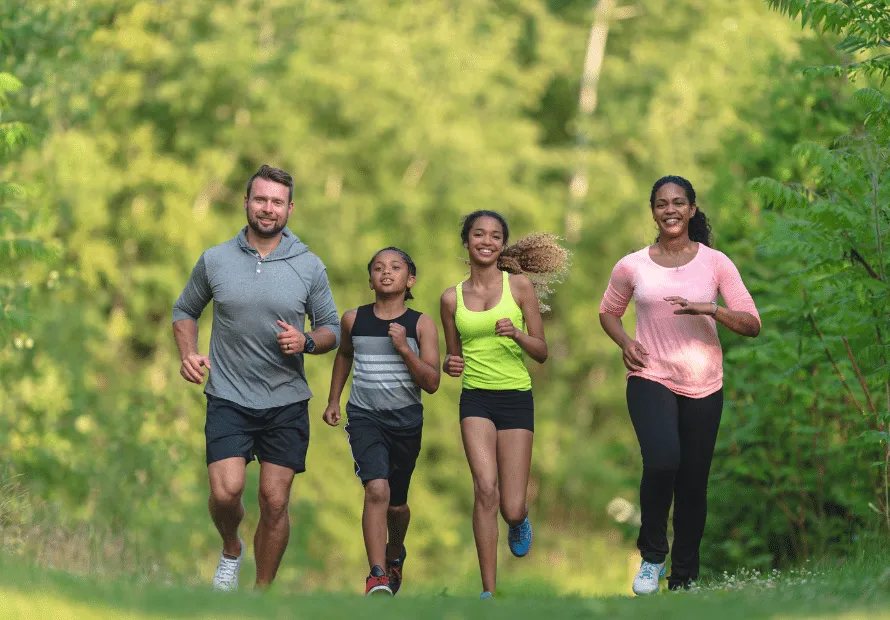Child Abuse Awareness and Prevention
Child Abuse Awareness and Prevention
April is Child Abuse Prevention Month. As we think about prevention, it is important to understand what child abuse is and what signs we might observe that would warrant concern. Mandated reporters like teachers, coaches, social workers, nurses, doctors, health workers, and other community service workers are well trained in the signs. But as community members, we all have a responsibility to look out for our children and report abuse when it occurs. Let’s explore some of the signs of child abuse, and how we can be alert to them.
Child abuse is broadly defined as emotional, physical, verbal, sexual, exploitative, and the most common form, neglect. More children die or end up in foster care because of neglect than any other form of abuse. Abused children are at risk of teen pregnancy and risky sexual behavior. As adults, they are at risk of abusing their own children, perpetuating the cycle of violence. One study found that 80 percent of 21 –year olds who had been abused in childhood met the criteria for at least one psychological disorder. Children under 4 years of age and children with disabilities are the most vulnerable to abuse. The consequences of child abuse are lifelong and can be dire, especially if no intervention is sought or available. That is why it is so important to be aware of the signs that a child is being abused and to intervene as early as possible.
Signs of Abuse
Let’s look at some signs that might indicate abuse is taking place, and that intervention is needed. There might be other reasons for some of these behaviors, but they may also be indicative of abuse, especially if they occur in combination.
- Some signs of physical abuse are unexplained bruises, welts, fractures, bite marks or burns; behaviors like extreme aggressiveness or extreme withdrawal; fear of parents and reluctance to go home; general wariness of adults. Children will often have an excuse for bruises and other physical signs, but frequency should be an alert to possible abuse.
- Some signs of emotional abuse may be extreme behaviors such as extreme aggression or extreme compliance and passivity; rocking, biting or destructive behavior; inhibited play with other children; sleep disorder; and speech disorder. Verbal assaults by parents, such as belittling, screaming, blaming, threatening, and giving conflicting messages to a child are damaging and can cause long lasting emotional damage.
- Some signs of sexual abuse may be difficulty walking or sitting; constantly touching genital areas; bruising, bleeding, pain or itching in genital areas; venereal disease, and pregnancy. Behaviors that might indicate abuse include sophisticated knowledge of or participation in sexual behavior, and reluctance to change clothes for PE in school.
- Some signs of physical neglect may be consistent hunger, stealing food; poor hygiene; chronic fatigue; inappropriate dress, like summer clothes in winter and no coat; and unattended medical and physical conditions. Signs of general neglect do not involve physical maltreatment, but leave a child feeling abandoned, not loved or wanted, unsafe and insecure. Emotional deprivation is an insidious form of abuse. The lack of supervision often leads children to engage in risky behaviors. The home may be unsanitary, filled with garbage, lack heat or adequate plumbing, have fire hazards, lack adequate sleeping arrangements, and be generally unsafe. Suspicion of an unsafe home may warrant a request of your local Health Department for a safety check.
Risk Factors for Child Abuse
Sexual exploitation and trafficking is another dangerous form of child abuse.Teens are often lured into being trafficked by a promise of safety. Teens have often left a home where they were sexually or otherwise abused, only to find life on the street difficult. The promise of shelter and food may lead them to exploitation. Homeless youth who have aged out of foster care and adolescents and teens living in group homes are also easy prey to traffickers.

Most child abuse is perpetrated by parents. Many risk factors contribute to family dysfunction that leads to abuse, and most often abuse is the result of a combination of factors. Alcohol and drug abuse, mental illness, domestic violence, financial stress, lack of employment opportunities, physical health issues, and an incarcerated parent are some of the risk factors that contribute to abuse. Immature parents who don’t understand the needs of children, or parents with many children can be overwhelmed and frustrated. Parents who were abused or neglected, or exposed to domestic violence as children, are more vulnerable to abusing their children. Families that are isolated from other people and do not have a support system are also vulnerable.
The communities that families live in can also play a role in risk factors for abuse. Communities with high rates of crime and violence, high rates of poverty, unemployment, limited economic and educational opportunities, and easy access to drugs and alcohol, contribute to the vulnerability of families. Likewise, a lack of recreational activities for youth, communities that lack community awareness and involvement, do not provide the safety and security of community support.
How Can We Help Address and Prevent Child Abuse?
What can we, as community members, do to address and prevent child abuse? How can we support children and families in our communities? There are protective factors that can limit or mitigate the risks of abuse, and we can advocate for them.
Many caregivers strive to create relationships with their children that are grounded in safety, nurturance, and mutual respect. They aim to meet their children’s basic needs of food, shelter, education, and health. They provide economic and emotional security, establish strong support systems, and provide oversight and supervision of their children’s activities. When parents do not have the ability to provide these important resources, communities can step up to provide the mentorship needed to help them learn and achieve success.

Communities can help to mitigate the risk factors and ensure access to safe and affordable housing, high quality childcare and pre-school programs, safe and engaging after school activities, accessible medical and mental health services, financial assistance, and employment opportunities. Parenting skills classes, programs like Mommy and Me, and mentorship programs can help educate while also mitigate isolation and reduce the risk factors that lead to child abuse. Helping parents build support systems with caring neighbors and community groups allow parents to more easily ask for help from people with whom they have relationships.
What can you do? Your community’s children are everyone’s responsibility. Become familiar with the resources in your community and help build those resources that are missing. Maintain your supportive, nurturing relationships with the children in your life. If you have time, volunteer as a mentor in an after-school program or other community activity. Encourage struggling parents to ask for help and use available supportive resources. Offer your help as you are able. Advocate for workplace policies that help families, including family leave and livable wages. Advocate for policies that reduce violence and promote safety. All these efforts will benefit everyone in your community and will provide a safe and secure environment that will help families find the help they need to be successful.










